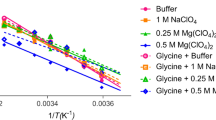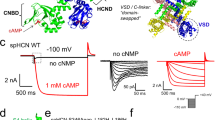Abstract
IT is interesting to note that the unbalance obtained by reducing the calcium content of physiological solutions can to some extent be offset by the addition of small quantities of lipoids to the solution. Thus frog heart rendered hypodynamic, or even arrested, by Ringer solution less varying amounts of calcium chloride, can be made to beat normally again by adding small quantities of sodium oleate, of sodium palmitate, of impure lecithin, or of ox blood thrombin to the Ringer, the pH being maintained unaltered the effect was not observed with very pure lecithin or very pure kephalin, but a similar effect was obtained with lyso-lecithin, which first reduces the beat and also contracts the heart. Similarly, Clark and others1 have shown that frog heart rendered hypodynamic by prolonged beating in Ringer solution shows increased activity when given extra calcium, sodium oleate, impure but not pure lecithin, impure but not pure kephalin, or serum. Ox blood thrombin, serum, and all but the purest samples of phospholipins contain traces of soaps which may well account for the activity of these substances in offsetting calcium deficiency. Mytilus cilia will beat for some time in artificial sea water at pH 6·5, but are quickly arrested if they are put in a similar medium at the same pH without calcium (removed as chloride)2 the ciliary beat is restored in such a calcium-free solution at the same pH if traces of one of the following substances are added: sodium dodecyl sulphate (the magnesium present rendered the oleate and palmitate of sodium insoluble and therefore ineffective), hexa-decyl-trimethyl-ammonium bromide, lyso-lecithin, impure lecithin, or ox blood thrombin. Triolein, sodium butyrate and sodium glycerophosphate showed no restorative effect. In considering these facts, it should be noted that calcium is found to be more active under lipoid than under protein monolayers.
This is a preview of subscription content, access via your institution
Access options
Subscribe to this journal
Receive 51 print issues and online access
$199.00 per year
only $3.90 per issue
Buy this article
- Purchase on Springer Link
- Instant access to full article PDF
Prices may be subject to local taxes which are calculated during checkout
Similar content being viewed by others
References
Clark, A. J., “The Metabolism of Frog Heartâ. Oliver and Boyd., p. 96 (1938).
Gray, J., Proc. Roy. Soc., B, 93, 115 (1922).
Heilbrunu, L., “An Outline of General Physiologyâ. Saunders (1937).
Tennet, Amer. Naturalist, 72, 97, (1938).
Gray, J., “Experimental Cytologyâ. Cambridge (1931).
Pollack, J., J. Gen. Physiol., 11, 539, (1928).
Schulman, J., and Rideal, E. R., NATURE, 144, 100, (1939).
Schulman, J., and Kideal, E. K., Proc. Roy. Soc., B, 122, 29 (1937).
Author information
Authors and Affiliations
Rights and permissions
About this article
Cite this article
CARTER, G., GATTY, O., SCHULMAN, J. et al. Calcium in Ciliary and Muscular Movement. Nature 144, 980–981 (1939). https://doi.org/10.1038/144980d0
Issue Date:
DOI: https://doi.org/10.1038/144980d0
Comments
By submitting a comment you agree to abide by our Terms and Community Guidelines. If you find something abusive or that does not comply with our terms or guidelines please flag it as inappropriate.



